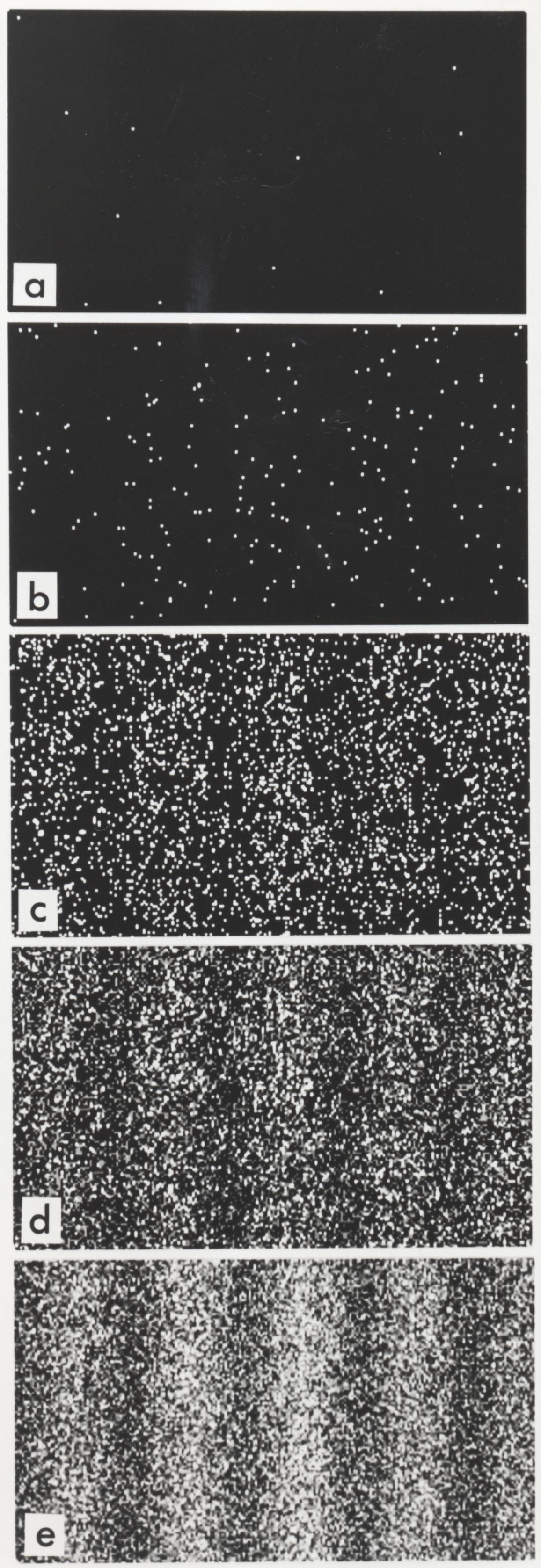"And here we are! The grand daddy of all quantum weirdness. The infamous Double slit experiment! To understand the experiment we first need to see how particles or little balls of matter act.
If we randomly shoot a small object, say a marble, at the screen we'll see a pattern on the back wall where they went through the slit and hit.
Now, if we add a second slit, we would expect to see a second band duplicated to the right.
Now, let's look at waves. The waves hit the slit and radiate out, striking the back wall with the most intensity directly in line with the slit. The line of brightness on the back screen shows that intensity, this is similar to the line the marbles make.
When we add a second slit, something different happens. If the top of one wave meets the bottom of another wave, they cancel each other out - so now there is an interference pattern on the back wall: places where the two tops meet are the highest intensity - the bright lines and where they cancel - there is nothing!
So when we throw things, that is matter through two slits, we get this: two bands of hit and with waves we get an interference pattern of many bands. Good! So far.
Now, let's go quantum!
An electron is a tiny, tiny bit of matter, like a tiny marble. Let's fire a stream through one slit, it behaves just like the marbles, a single band. So if we shoot these tiny bits through two slit we should get, like the marbles, two bands. What? An interference pattern!
We fired electrons - tiny bits of matter through - but we get a pattern like waves, not like little marbles.
How? How could pieces of matter create an interference pattern like a wave? It doesn't make sense!
But physicists are so clever. They thought maybe those little balls are bouncing off each other and creating that pattern. So, they decide to shoot electrons through one at a time. There is no way they could interfere with each other. But after an hour of this the same interference pattern is seen to emerge!
The conclusion is inescapable - the single electron leaves as a particle, becomes a wave at potentials, goes through both slits and interferes with itself to hit the wall like a particle!
But mathematically it is even stranger - it goes through both slits and it goes through neither, and it goes through just one and it goes through just the other. All of these possibilities are in superposition with each other. But physicists were completely baffled by this! So, they decided to peek and see which slit the electron actually goes through!
They put a measuring device by one slit to see which one it went through.
But the quantum world is far more mysterious than they could have imagined - when they observed the electron went back to behaving like a little marble - it produced a pattern of two bands NOT an interference pattern of many!
The very act of measuring or observing which slit it went through meant it only went through one, not both.
The electron decided to act differently. As though it was aware it was being watched!
And it was here that physicists stepped forever into the strange, never world of quantum events.
What is matter? Marbles or waves? And waves of WHAT? And what does an observer have to do with any of this?
The observer collapsed the wave function simply by observing!"
Warning: There are some idealists who want to make the others believe that the whole physical world is not real, it's just an illusion created out of our pure mind. They may misunderstood what quantum mechanics told them about the measurment problem. Firstly, we measure, that is we have to use a device to detect the particle, not simply look at the wave with our unaided eyes and then make them transform into a particle. Electrons change their behavior not because someone who is whatching them makes them feel uneasy like when someone whatches you in the shower :D. In fact we must shoot photons toward them or use a detector to capture them on their way. And we don't need to follow the process and observe what happens. Therefore, the role of our conciousness here is insignificant. In other words, we don't have anything to do with the interaction between the wave and the detecting device. Secondly, by the act of measurement we just create "particles" out of their wave form, not ex nihilo (out of nothing). So one cannot say that we create the whole universe just by looking at it. Some physicists like to exaggerate the weirdness of quantum mechanics. They unawarely or not distorted the truth by saying such things.







No comments:
Post a Comment